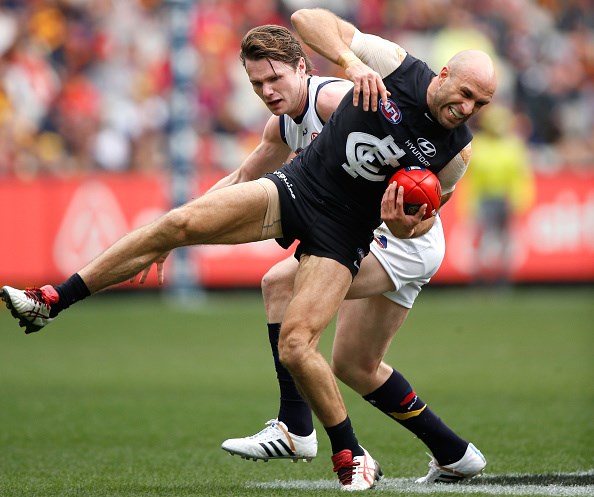When can I return to sport after an ACL knee reconstruction or other serious injury?

When can I play again?
How do I know if my knee is ready to return to sport?
One of the most common questions a sports physiotherapist is asked is “When can I play again?”
In this article I describe what is needed but please also explore the Youtube videos I have created to show you how to do the tests.
Injured athletes, in most situations, want to return to playing the sports they love as soon as possible. Coming back too soon, however can be disastrous and can cause further injury. Our Colac based Physiotherapists are best positioned to take athletes through specific testing to determine when the risk of further injury is low. There are a number of boxes that need to be ticked to also determine if the athlete can perform at a level that is required for their specific sport.
GOALS FOR RETURN TO SPORT
Setting goals and expectations that need to be achieved in an athlete’s rehabilitation helps to ensure the process is efficient and effective. Our Physiotherapists provide our clients with a management plan that helps to step them through the phases of recovery based on achieving outcomes. This will mean that some athletes may recover and return safely to sport more quickly than others.
BENCHMARKS AND BOXES THAT NEED TO BE TICKED
Factors that need to be considered and benchmarks achieved in a sequential order are:
The Physiology of Healing – Different structures heal at different rates. An ACL reconstruction will take on average 12 months to return to full participation depending on the sport. A sprained medial ligament may take 4-6 weeks. However we do not just give a timeframe and say to people you will be right after this amount of time. Many boxes need to be ticked before play can safely be resumed.
Swelling and Inflammation – We aim to reduce swelling as soon as possible as joints and muscles will not function normally and will be painful whilst swelling and inflammation is present
Range of Motion – We aim for full pain free range of motion in joints and normal flexibility in muscles without pain on stretching them.
Strength – We aim for a strong pain free contraction of all muscles surrounding a joint. For the knee we will be expecting the athlete to be able to do at least 5 well controlled single leg squats before resuming jogging. To see how we use technology to assess an athletes squatting technique check out the video below.
Human Trak Video Assessment of squatting
Tolerance to Running – We ensure that an athlete can hop on the spot pain free before returning to running and progress from jogging to striding before sprinting. If athletes are struggling initially we may implement a deep water running program to maintain fitness whilst avoiding higher impact. We observe for limping and ask the athlete to report any pain or irritability both during and after running sessions.
Jumping and Landing Safely – Jumping and more importantly the ability to land with good control at the hip, knee and ankle is essential to test before doing full competitive jumping and landing sports.
Jumping and Landing Assessment
We will administer the single and triple hop test for distance which measure explosive strength and landing tolerance and confidence.
BALANCE AND AGILITY
Ability to change direction, Agility, Balance – Once able to run in straight lines without symptoms or swelling we will add in lateral and rotational activities that challenge the joints and muscles with different directional forces. This is initially done at low speed and gradually increased as tolerated. We will also administer the star excursion balance test to ensure that the balance on the affected leg is similar to the unaffected side. Follow this link to check out the test
We will also do the triple cross over hop test.
Sports Specific Skills
Non Competitive Training – Once an athlete can run, change direction, jump and land we will allow them to return to training at a non-competitive level – this is generally skill based training and not at full intensity.
Competitive Training – If an athlete is able to cope with a few non-competitive training sessions without pain or swelling and feels confident in their injured joint or muscle they can then progress to full competitive training.
Match Simulation Drills – The final step is doing match simulation drills and the athlete being able to compete at a level of strength, fitness, confidence and skill that their coaching staff feel that they are able to perform at a level where they can be selected.
Confidence – With return to sport following a serious injury like an ACL reconstruction we will also provide our athletes with a questionnaire to complete that measures their confidence in their knee. A lack of confidence can sometimes be a mental thing but can also be an indication that the higher level strength and control required for full unrestricted participation has still not been achieved.
